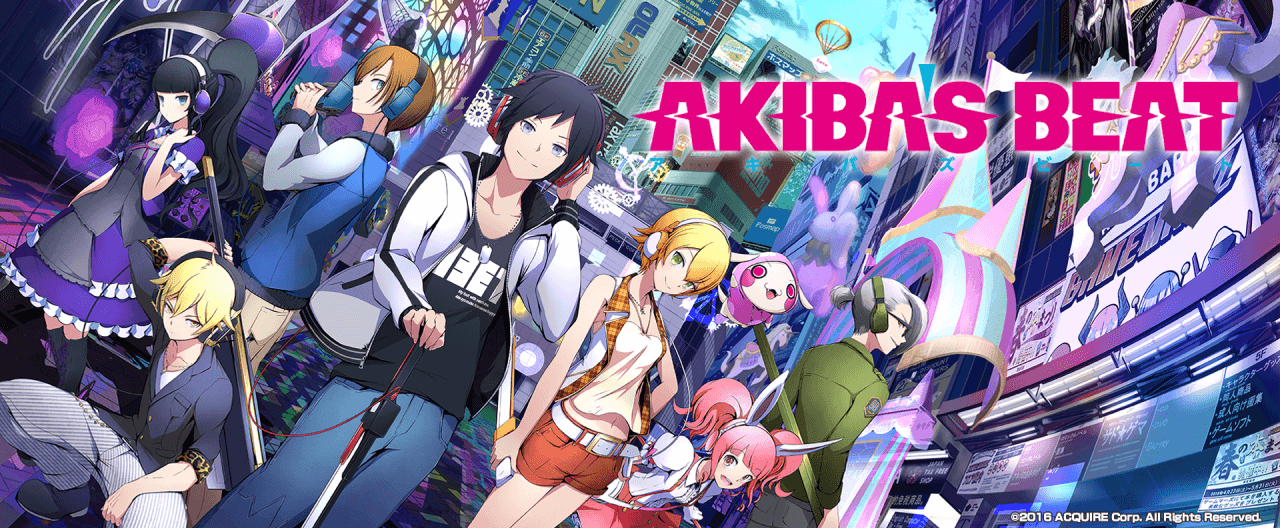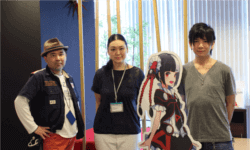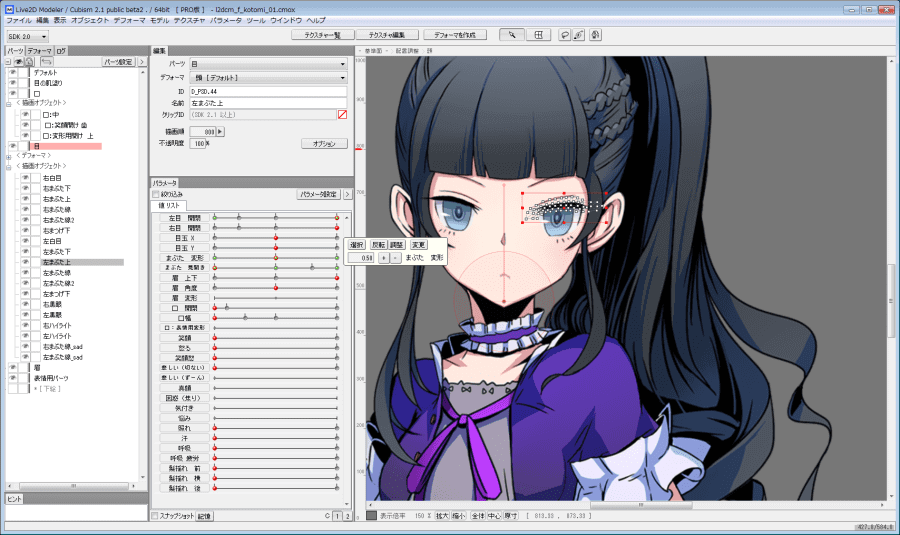


We are a team of three behind development of AKIBA’S BEAT. Each member has separate responsibilities; preparing graphic assets, operating Live2D, and applying Live2D data. This game was our company’s first game to make use of Live2D, and therefore as Computer Graphics experts, we were assigned to this project with the aim of learning the technology and potentially applying it to future projects.
Early in the development, we asked our designer to prepare original character illustrations with various poses and subsequently corresponding front-facing illustrations specifically for the purpose of Live2D. And we would animate the front-facing illustrations to achieve the original poses in motion. However, it was very difficult to morph the front-facing illustrations into the original poses as these poses were drawn freely without consistency in mind. With many things considered, we decided to prioritize original expression over everything else and to directly animate the original posed illustrations. This original-first process forced us to produce Live2D models in a rather abnormal way, such as registering over 10 unique facial key forms without using default parameters. Thanks to our team’s effort, we managed to achieve the exactly the same expression as our designer intended.

Since our inception, we wanted to put a strong emphasis on scenario events to shape this game’s core attraction. With limited budget and time resources, we asked ourselves “how can we deliver attractive and emotionally engaging scenario events in the game?” After exploring our options, we came to decide on using Live2D as it would allow us to animate the original artwork.
We have tried many different tools, and our impression of Live2D is that it’s an artist-friendly tool with capacities like importing a PSD file with layers and a wide selection of samples and tutorials. Even artists who are not good at digital tools should be able to use the software intuitively. It’s this artist-friendliness that allowed us to produce over 40 characters rather efficiently across different functions of our team.

We wished that the tool could support a large scale production better. For example, when a certain requirement changed during the project, we had to apply the change to all of existing Live2D assets manually, which was error-prone and inefficient. The tool would be much more powerful if it allowed scripting with JavaScript or Python.